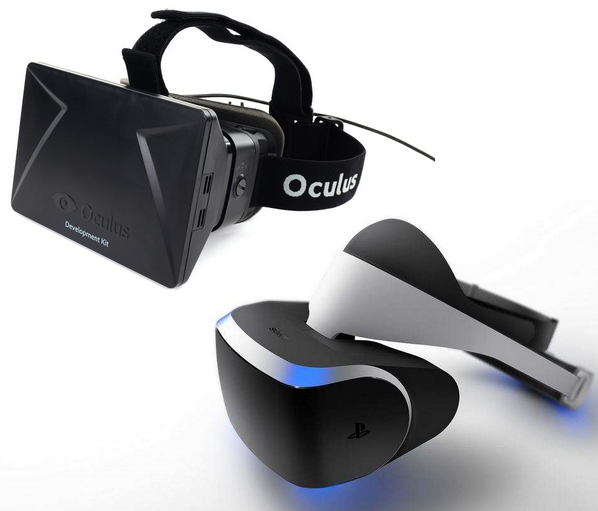Reviewed by: Jamaal Ryan
As I dance down the playfully colored suburban town as a Sunflower
with a peddle to peddle grin on her face, I encounter a band of fowl looking
zombies that emerge from a purple plume of miasma. Two more equally happy
looking Sunflowers then join my side.
One rooted themselves in the ground, laying down a devastating
sunbeam while the other offered cover fire just as they attached a heal beam to
the other to sustain their health. I drop a sunflower pot in front of us that
spat up handfuls of healing sun drops with my heal beam attached to it, firing
upon all hostile zombies alongside my sunflower sister-en.
We were an unstoppable force of sunshine.
Plants vs Zombies: Garden Warfare is one of the most interesting
titles EA has allowed since the likes of Brutal Legend and Bulletstorm. PopCap
has taken their beloved mobile tower defense hit and turned it into a gorgeous,
well executed class based shooter.
All the charm and quirkiness that PVZ is known for is well
presented in Garden Warfare. Crazy Dave's CRAAAZY giber-jabber is still perfectly
nonsensical, and all the adorable little plants and zombie sprites are now
rendered in crisp full 3D models. From the furled individual peddles on the
sunflower's always smiling face to grumpy frown under the Ice-shroom's ice
crystal crown, though available on 360, next to Killzone: Shadow Fall, Garden
Warfare is arguably the best looking next gen release to date if you have an
Xbox One.
Garden Warfare is a pleasant surprise in many ways; among its
pleasantries is seeing how capable PopCap is as a competitive shooter studio.
There is a different type of satisfaction that comes from hitting targets from
just painting your enemies with the cursor to ensure ballistic contact; many of
the class's weapons have a Ratchet and Clank like nuance to them that encourage
you to point and shoot in different ways. Classes like the Foot Soldier and the
Scientist hold more traditional assault rifle and shotgun weapon types. Others
require a different understanding however. The Peashooter's Pea Cannon is slow,
but rewards reduced splash damage, and the Engineer's explosive Concrete Gun
fires at an arch making him adaptable in firefights in various distances,
elevations, and engagement around and over cover.
Hardly anyone's safe from the Engineer.
Garden Warfare is also one of the few games that give console
players a taste of a back-to-basics class driven third person shooter. Think of
it as Team Fortress meets Loadout skinned as PVZ. It's one that's free from the
stop and pop pacing of cover based shooters that populated consoles for the
entirety of this most recent generation since the dawn of Gears of War. Garden
Warfare is as familiar as it is new, with inspirations of old that's
re-evaluated for a new era of hardware.
Garden Warfare's biggest accomplishment comes from its complex
design that couldn't be easier to understand. It doesn't take long to get a
handle on how each of the 8 classes work thanks to brief video tutorials
introduced early on after a few short sessions. While the Foot Soldier
functions much like your traditional Battlefield assault class with its
automatic Assault Blaster and explosive "ZPG", playing as the Chomper
feels most like a stealth game where its deadly attacks from behind and below
make up for its lack of ranged capabilities.
Taking on the role of each of these endearing characters is
quite simple: you wield one primary weapon with unlimited ammo alongside three
rechargeable abilities. But how they interact is effectively adaptable so long
as you play as a team. A party of Sunflowers is a formidable organization, but
up against All-Stars who can erect Dummy Shields and offer heavy suppressive
fire, and Scientists that can drop Heal Stations, there's no "A-Team"
in Garden Warfare, just several highly efficient ones.
Happiness likes company.
Garden Warfare's modes are few in quantity. But Garden Ops, Team
Vanquish, and Gardens and Graveyards smartly cover its bases by offering co-op,
TDM, and objective based match types. Garden Ops is what you imagined Plants vs
Zombies would be as a shooter. Four plants face off against 10 waves of
increasingly challenging zombies while defending a precious garden. Planting
potted helpers around the maps akin to the original games and beefing up
defensive strategies against zombie boss rounds is a well-designed, and
surprisingly difficult-at-times affair.
Though Garden Ops makes the most sense for the Plants vs Zombies
franchise, it’s only after playing Gardens and Graveyards where Garden Warfare
makes the most sense. In this competitive match type, plants maintain their
defensive role while zombies attempt to make their way and gain control of
seven progressively plant defended locations across the entire map. Think of it
as a tighter, more focused version of Battlefield's Rush mode.
Every class is at their prime in Gardens and Graveyards, but
this mode lives and dies by the Zombie's Engineer. As zombies continue on the
offense, it’s the Engineer's job to build preset portals -- which can be
guarded by protective turrets -- that allow their efforts to be streamlined as
they can then teleport closer to the plants' guarded garden. The plants can
prevent this however by attacking the portals or ensuring that the Engineers
don't get to it.
These two center pieces, fighting over portals and gardens,
exist in a battle on a much larger scale. Just as plants can place their
defensive horticulture, zombies can summon lower grade undead to advance upon
defended gardens. These massive battles are then bookended in epic conclusions
if the zombies manage to push all the way to the end. The objectives shift from
defend and occupy to much more intense standoffs. Bringing down light houses
and planting explosive charges in a reactor are among these finales. My
favorite pushes the zombies up an elongated courtyard as they dodge giant
tumbling almonds as they roll downhill with intent to enter a mansion to claim
victory. The payoff is only in favor of one side, but it's a rewarding way to
end a match nonetheless.
At all costs.
While Gardens & Graveyards, and even Garden Ops to a degree,
is as defining to Garden Warfare as Conquest is to Battlefield, I found little
value in playing Team Vanquish outside of using it as a testing ground for new
character acquisitions as well as a platform to complete challenges. Team
Vanquish just doesn't seem to fit the roles and the balancing of the two
factions as well as the other two modes. It's here where the Plants' advantages
become more apparent. The Cactus is the most powerful at long range, the
Chomper is the deadliest up close, the Sunflower is the most efficient medic, and
the Peashooter holds the most devastating explosive. A well-coordinated team of
plants can easily have an edge on a team of zombies, which might explain why
nearly 80% of the Team Vanquish matches I played ended up with Plants coming
out on top. They weren't all landslides; in fact many of them were close games,
however the disproportionate ratios can't be a coincidence.
EA's micro-transaction inspired booster pack model finds its way
into Garden Warfare. Skins, cosmetic accessories, parts for unlockable class
variants, and consumables are hidden in sticker packs whose contents won't be
revealed until you purchase them with coins that are directly tied to your
score. And while I've been very much against this gambler's-chance model, it
fits reasonably well within the context of Garden Warfare's design. PZV doesn't
fall into the pits of gating away game changing unlockables in these sticker
packs. For example, you'll never have to worry about waiting to find the
Engineer's Zombot Drone and the Cactus's Garlic Drone in a sticker pack. All
character abilities and most of the action you see on screen are available
shortly after only leveling up each character a few times.
What you will have to hold out for in sticker packs are various
weapon types that come from alternate costumes, and weapon customizables that
do things like that alter firing rate and ammo capacity. Waiting for these can
be a nuisance, but sticker unlocks almost never give any player the edge,
allowing even the most stripped down character to be capable against all
class variants.
BOTTOM LINE
Plants vs Zombies: Garden Warfare simultaneously elicits the
question "Who is this for?" while allowing anyone that plays it to respond
to it in a "I’m glad this was made" manner. Don't let the pleasingly
bold, bright, and expressive visuals fool you; PVZ Garden Warfare is a highly
sophisticated shooter. Had this game been released last year, it would have
been my favorite shooter of 2013.
+ Enriching visuals
+ Strong and simple class based dynamics
+ Gardens and Graveyards
- Some annoyances with the sticker pack model
- Team Vanquish the weakest of the three modes
SCORE: B+































